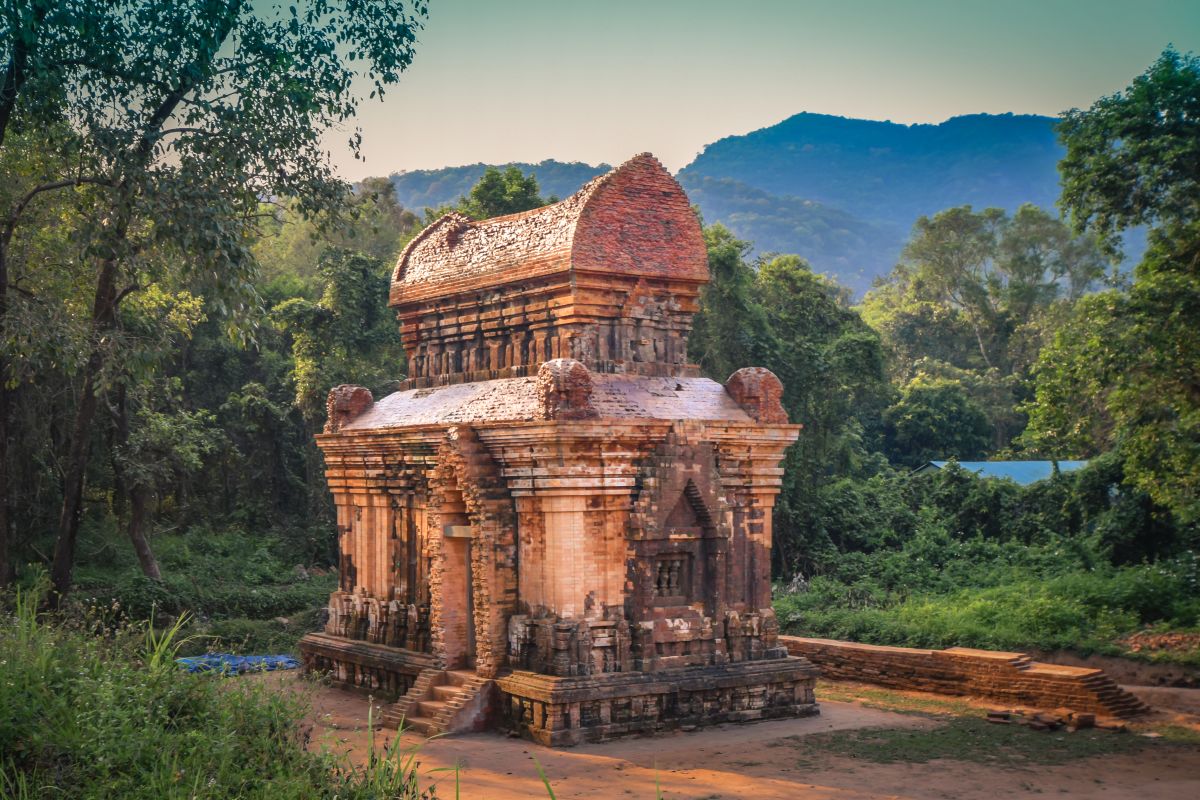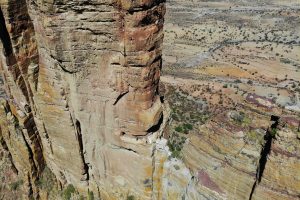
© Shutterstock
Location: Quang Nam, Vietnam
Belief: Hinduism
Era: 4th Century CE
Fazal Ahmad, London, UK
The ancient temple complex of Mỹ Sơn (pronounced mee sonn) in Quang Nam, central Vietnam, is a UNESCO World Heritage site. I had the privilege of visiting just before the COVID-19 pandemic travel restrictions.
The site had been overgrown and hidden until French archaeologists discovered it in the late 1890s. Mỹ Sơn was identified as the religious and political centre of the Champa Kingdom in Vietnam from the 4th century CE for almost a thousand years. Nestled within hilly jungles and surrounded by the mountains of Quang Nam Province, it is also the source of the sacred Thu Bon River.
The temple complex features 20 complete structures and remnants of around 50 more, dedicated to Hindu deities like Krishna, Shiva, Kala and Vishnu. Unfortunately, parts of this sacred site were heavily damaged by U.S. bombing during the Vietnam War in 1969. Nonetheless, many temples remain, offering insight into the worship practices of the Champa Kingdom. Visitors are reminded to stick to marked paths, as unexploded mines from the conflict may still be present.
The red brick temples symbolised the divide between the earth, heaven and the spiritual realm in between. The towers are believed to symbolise Mount Meru, sacred for Hindus as the centre of their universe. Most temples face east, adorned with carvings influenced by both Indian and Indonesian art, indicating the spread of Hinduism to Vietnam via Indonesia.
The various Cham tribes were unified into the Champa Kingdom by 192 CE, with Hinduism as its state religion. King Bhadravarman constructed the first tower temple for Shiva in the 4th century CE, followed by others over the next millennium. Some structures served as meditation halls or to house statues and other relics. While the Kingdom was dominated by Hinduism, there was ongoing influence from Mahayana Buddhism. Mỹ Sơn served as a ceremonial and spiritual centre for the royal family and the community, and also as a burial place for members of the royal family.
Although the Champa Kingdom flourished in Vietnam, there were regular incursions from Chinese, Khmer and Javanese invaders. The Mongol invasion in the 13th century CE imposed Buddhism as the dominant religion in the region. The Champa Empire declined around 1832 CE; however, a practising Cham community remains in central Vietnam.
Mỹ Sơn is now a visitor attraction in Vietnam, and significant as one of the longest continuously inhabited religious centres in Indo-China.
References:
A. McGill, Vietnam (New York, USA: Dorling Kindersley Publishing, 2019).
Michell, G. The Hindu Temple – An Introduction to its Meaning and Forms (Chicago, USA: University of Chicago Press, 1988).
“My Son Sanctuary,” UNESCO. Accessed: June 9, 2024. https://whc.unesco.org/en/list/949/




Add Comment